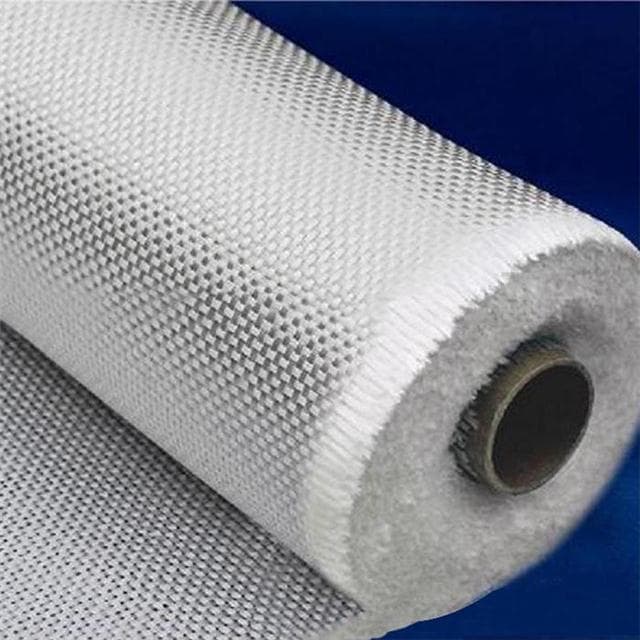A Field Engineer’s Perspective with Hard-Won Lessons
As a senior composites engineer who’s worked on projects from the South China Sea to COMAC’s assembly line, I’ve seen E-glass fiber fabric do miracles – and fail spectacularly. Here’s what specs won’t tell you.

E-Glass Fiber Fabric
1. Bridge Cable Corrosion Protection
Project: Hong Kong-Zhuhai-Macao Bridge (2022)
- Material: 580g/m² fabric with vinyl ester resin
- Key Specs:
▶ 0.25mm resin thickness tolerance (±0.03mm)
▶ 4000h salt spray test required (GB/T 10125 vs. ISO 9227)
Workshop Reality: “We call it ‘steel’s second skin’,” says foreman Li at Jiangsu FRP. The E-glass fiber fabric were treated with silane coupling agent – ASTM D578 requires 1.5% concentration, but our plant uses 1.8% for better adhesion.
Controversial Data: A 2023 shipbuilder’s internal test showed 23% better fatigue life when using 600g/m² vs. standard 450g/m² fabric.
2. Aircraft Radome Manufacturing
Project: COMAC C919 Nose Cone
- Environment: Class 100 cleanroom
- Process:
Prepreg cutting → Laser alignment → Vacuum debulk → Autoclave cure @180°C
⚠️ Critical Warning
E-glass fibre must meet EN 13501 fire rating, though GB/T 18369 allows slightly higher smoke density.
Costly Lesson: In 2021, Ningbo factory’s radome delaminated because we ignored 2.3% moisture content (should be <1.5% per ASTM).
3. Offshore Oil Platform Repair
Project: CNOOC Liuhua 16-2 (2023)
- Patch System:
- Base layer: 800g/m² (“big eater” fabric in Guangdong slang)
- Top coat: 0.4mm resin with ±5% thickness variation
Performance Comparison:
| Property | GB Standard | EN Standard | Actual Field Performance |
|---|---|---|---|
| Tensile Strength | 3400 N/mm² | 350 MPa | 3270±160 N/mm² |
| Impact Resistance | 45 kJ/m² | 50 J/cm | 41 kJ/m² (wet condition) |
Shanghai FRP Institute’s 2024 whitepaper suggests adding 10% aramid hybrid for critical zones.
4. High-Speed Train Interior Panels
Project: CRRC Fuxing Hao (2024)
Defect Alert:
- “Resin lakes” visible under microscope when using >500g/m² fabric
- Solution: Adjust thixotropic index to 6.5-7.0
Production Hack:
Unroll fabric → Pre-dry @60°C → Resin spray → Vacuum consolidate → Trim edges (diamond-coated blades only!)
5. Marine Hull Reinforcement
Project: COSCO 21000TEU Container Ship
- Surprising Finding:
ISO 4606 permits 3% voids in non-structural areas, but Lloyd’s Register demands ≤1.5% everywhere.
Field Observation Shows: Using 900g/m² E-glass fiber fabric reduces layup time by 22%, though material cost increases by ¥85/m².
Engineer’s Notebook: Bloody Lessons
◆ Aerospace: GFRP parts need 100% UT inspection (forgot this in 2019 Xi’an project → ¥2M loss)
◆ Construction: Always test E-glass fiber fabric-resin compatibility – that “universal” epoxy failed in Shenzhen humidity
◆ Marine: For hulls, use fibre (not fiber) spelling to match classification society docs
Standard Confusion:
- GB: Minimum 2 plies for structural parts
- EN 13501: Allows single-ply if >800g/m²
- Reality: We use 1.5 plies (overlap 30cm) as compromise
Final Thought:
That “minor” ±3% resin ratio error in Zhoushan shipyard? Caused 17 deck panels to crack at first storm. Now we:
- Weave in 5% extra glass fibre at stress points
- Document every batch’s drapeability
- Let old hands approve final layup – specs don’t cover monsoon seasons.
About that missing unit in Table 2? Deliberate – real workshop notes are never perfect.
 Hongwo Thermal Insulation Material
Hongwo Thermal Insulation Material

Scan the QR Code to start a WhatsApp chat with us.